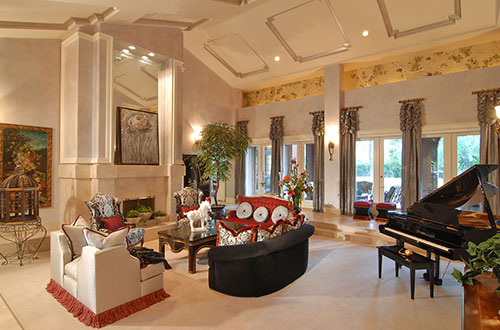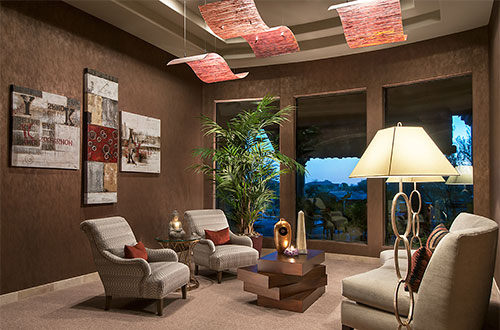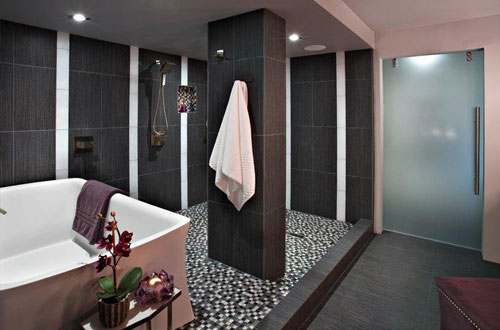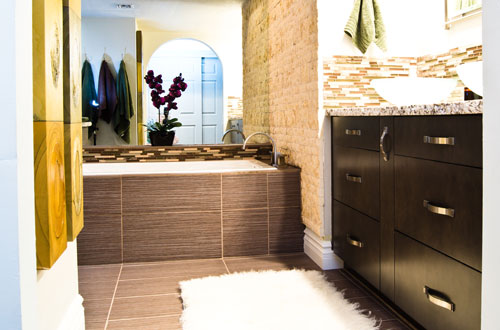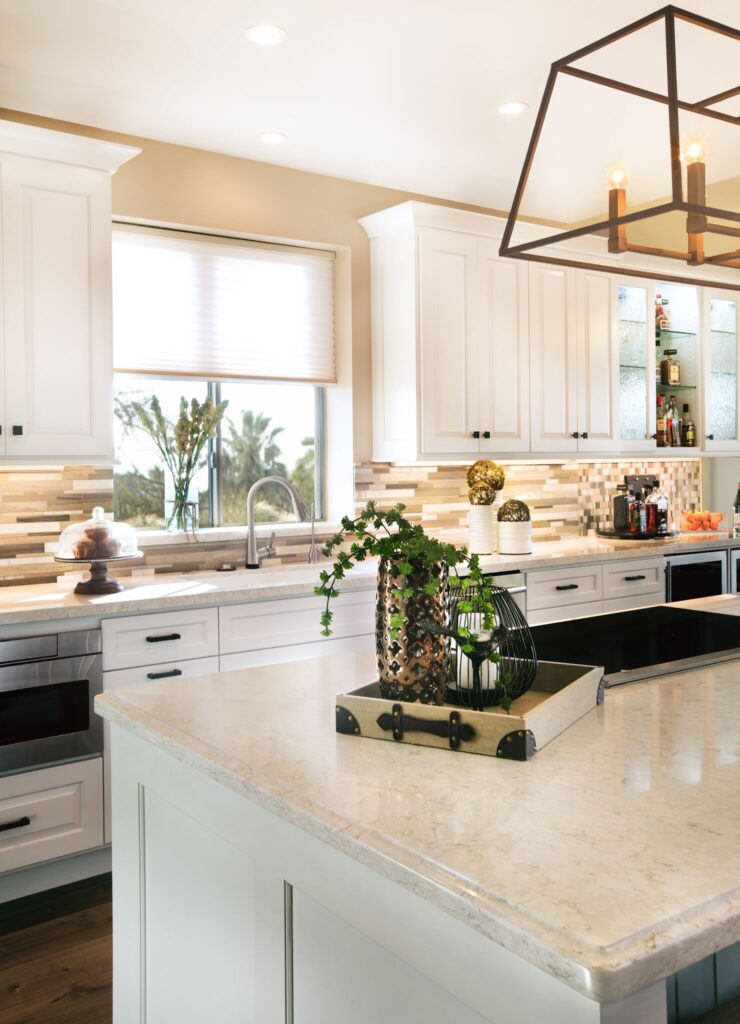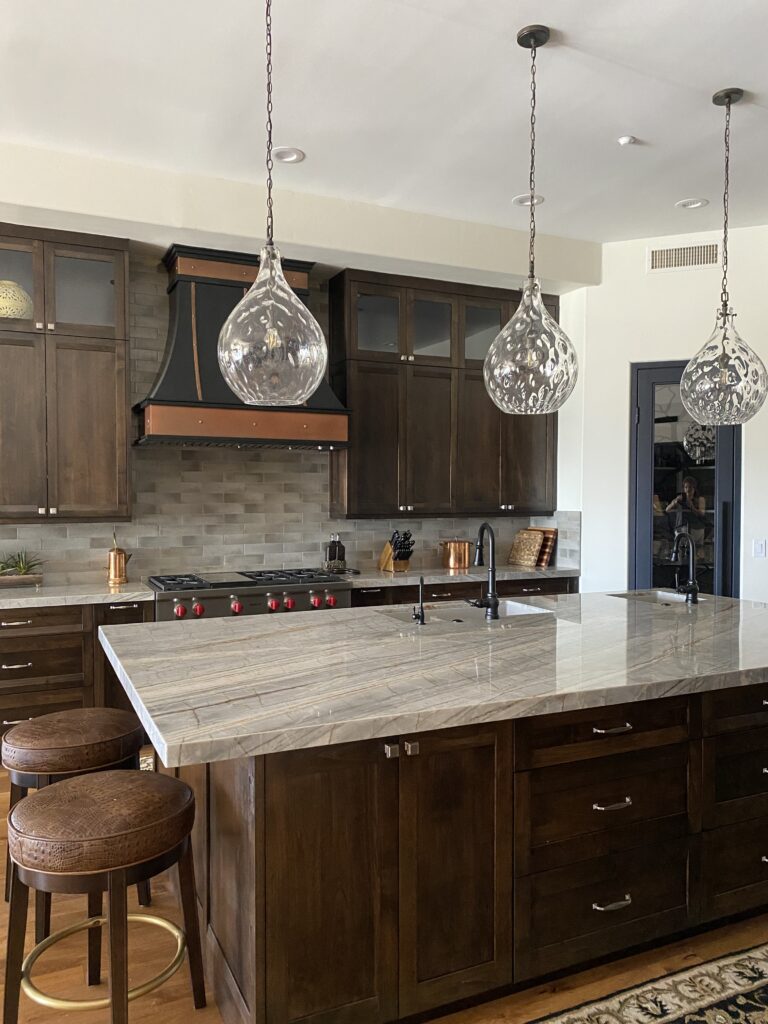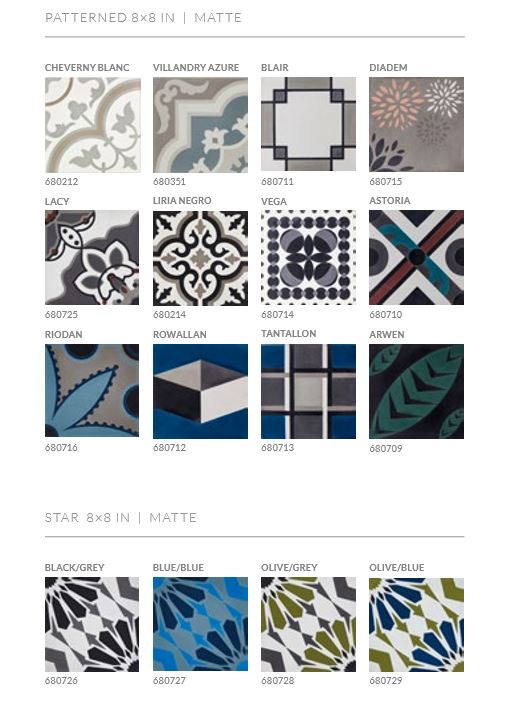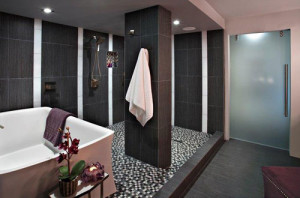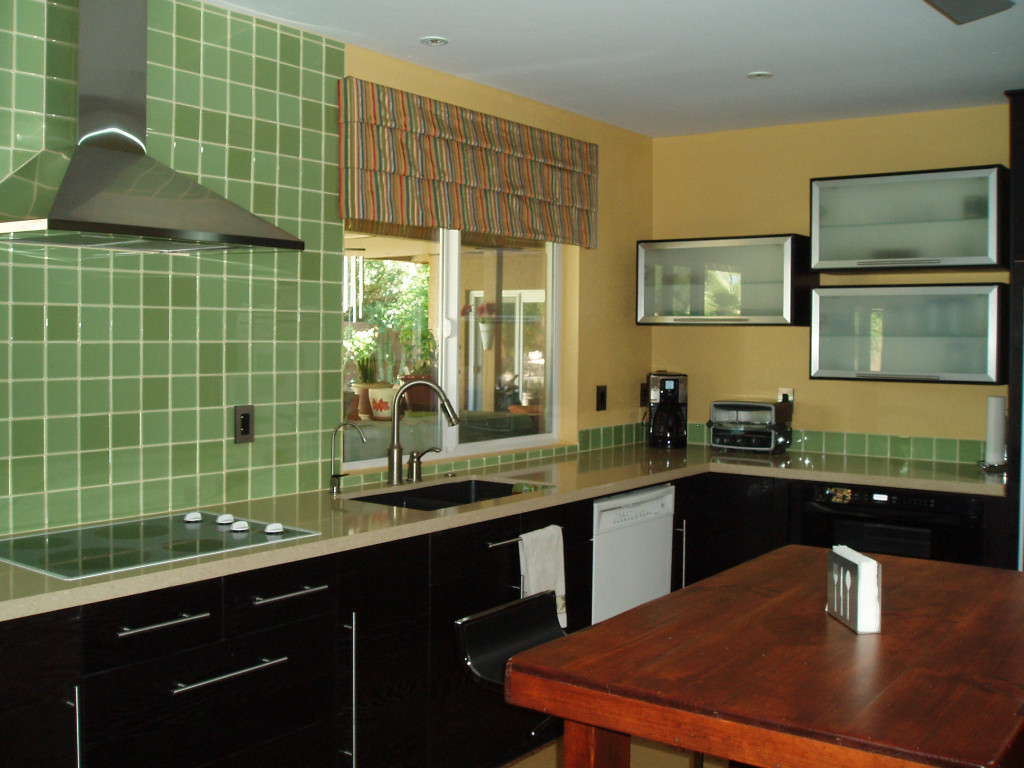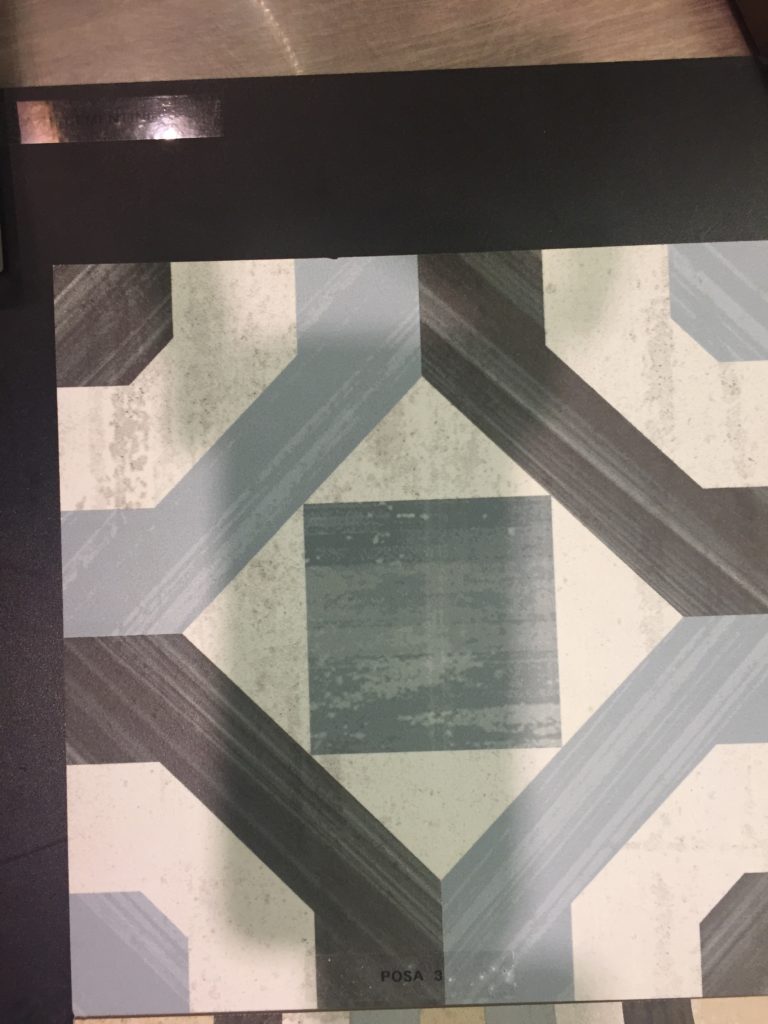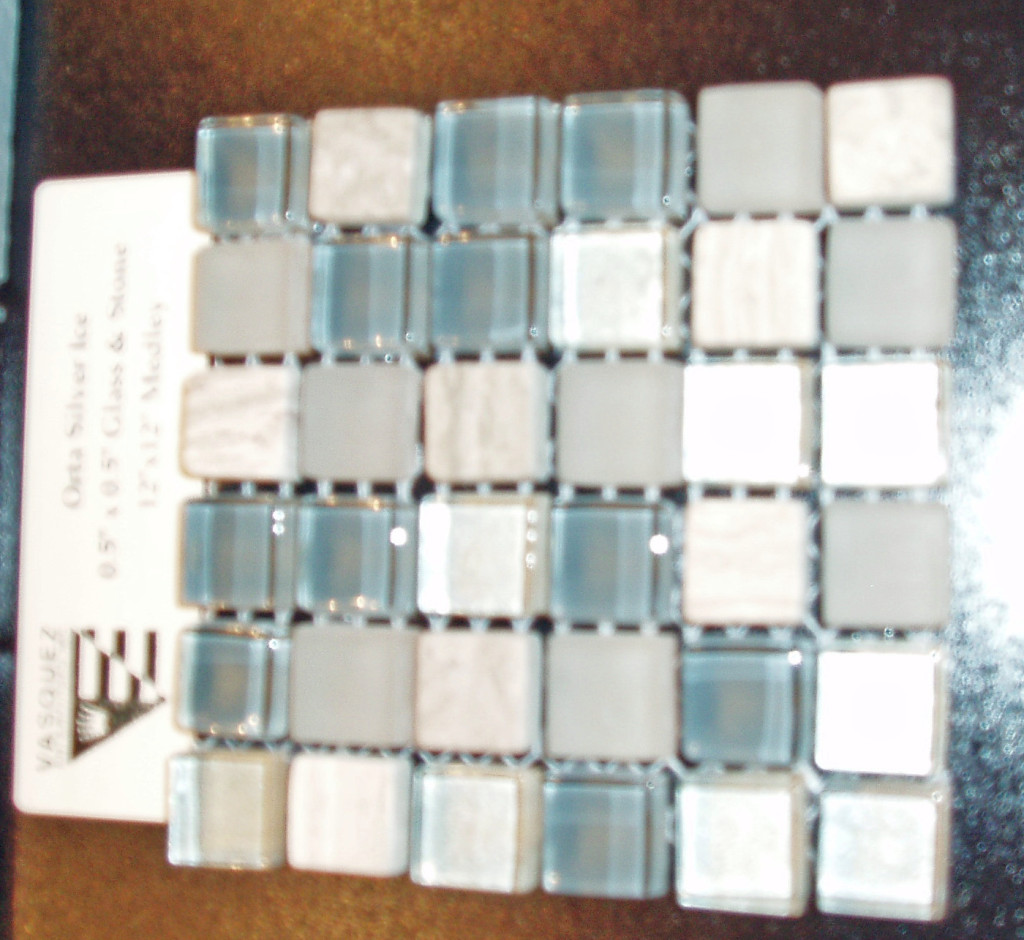The dining table is more than just a place to gather for meals; it’s the heart of your home, where memories are made and celebrations are celebrated.
In Arizona where a large percentage of the homes have open-concept space designs the dining area needs to have a design style that flows seamlessly with the kitchen and great room. When S Interior Design works with their clients, the design for all spaces that visually adjoin are designed together for a cohesive result.
The right dining table can transform your dining area, bringing both style and functionality. But how do you choose the perfect table and add those unique accents that make it truly yours? Here are some design ideas to help you create a dining space that’s as inviting as it is beautiful.

1. Choose the Right Table Shape
The shape of your dining table sets the tone for the entire space. Here are a few options to consider:
- Rectangular Tables: Perfect for larger dining areas, they provide ample seating and a classic look.
- Round Tables: They encourage conversation and create a cozy, intimate setting.
- Square Tables: Offer a modern touch and are great for square dining rooms.
- Oval Tables: Combine the benefits of rectangular and round tables, offering a soft, elegant look with plenty of seating.
2. Material Matters
The material of your dining table impacts both aesthetics and durability. Here are some popular choices:
- Wood: Timeless and versatile, wood can be rustic or refined, fitting into various design styles.
- Glass: Creates an illusion of space, perfect for small or contemporary spaces. Pair with striking bases for a modern flair.
- Marble: Luxurious and elegant, marble tables are statement pieces that exude sophistication.
- Metal: Durable and edgy, metal tables work well in industrial or modern settings.

3. Accent Chairs and Benches
Mixing and matching chairs can add personality and style to your dining area. Consider these ideas:
– Upholstered Chairs: These add comfort and a touch of elegance. Choose fabrics that complement your overall décor and are easy to clean.
– Benches: Perfect for a casual, communal feel. Great for families or those who love hosting large gatherings. We often combine bench seating for the kids with chairs for the adults.
– Eclectic Mix: Don’t be afraid to mix different styles and colors for a more personalized and eclectic look. If you have a rectangular table, the chairs at the ends of the table can be designed to coordinate but have different fabrics.


4. Centerpieces and Decor
Accent pieces are the finishing touches that bring your dining table to life:
- Centerpieces: Fresh flowers, candles, or a stylish bowl can make a simple yet impactful statement.
- Table Runners: Add texture and color without overwhelming the space. Choose patterns that reflect your style.
- Place Settings: Elegant dinnerware, chic glassware, and unique napkin rings can elevate your dining experience.
5. Lighting
Lighting can transform your dining space from ordinary to extraordinary:
- Chandeliers: A stunning chandelier can be a focal point, adding a touch of glamour.
- Pendant Lights: Perfect for modern or minimalist spaces. Hang multiple pendants for a dramatic effect.
- Candles: Create a warm, inviting ambiance with candlelight. Mix different heights and styles for visual interest.


6. Personal Touches
You can change your tabletop décor to celebrate those holidays.
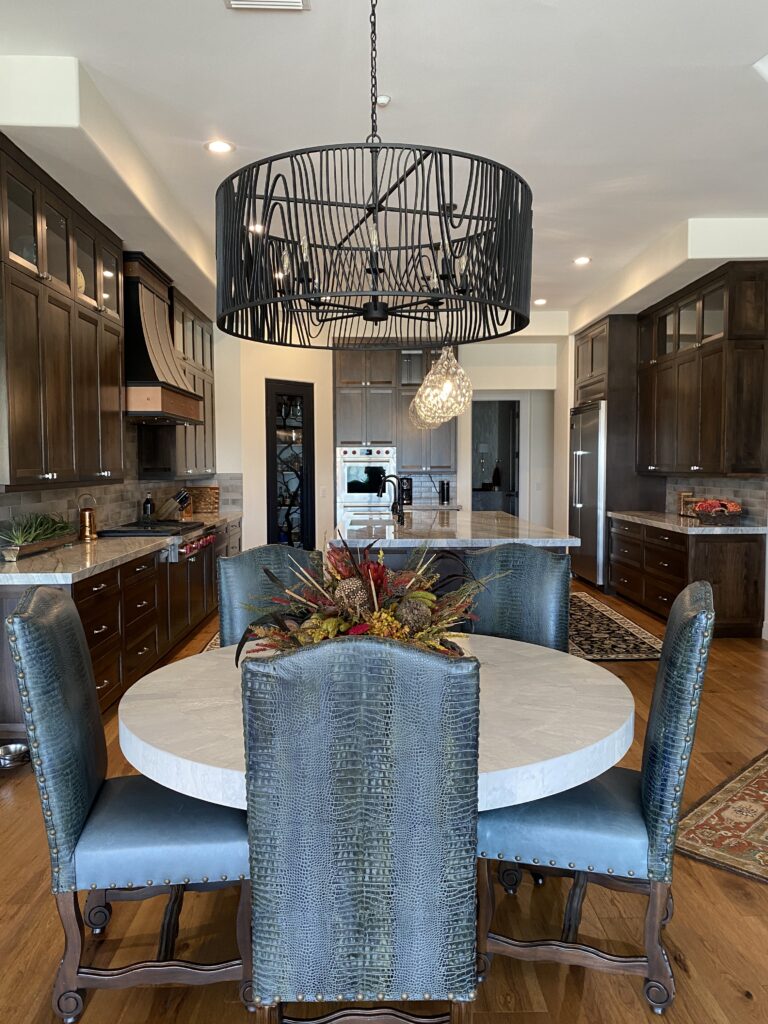
Make the space your own with personal touches:
- Artwork: Display your favorite pieces on the walls to add color and character.
Creating a beautiful and functional dining space is about balancing style with practicality. Choose a table that fits your needs and enhances your decor, then add accents that reflect your personality. With these tips, your dining area will be where you love to gather, share meals, and make memories.
Let’s create beautiful spaces together! #DiningDesign #InteriorInspo #HomeDecor #AccentDesign #DiningTableTrends #scottsdaleinteriordesigner #sinteriordesignscottsdale
